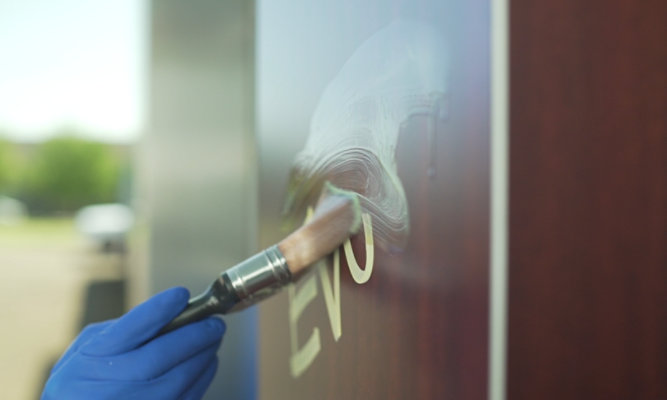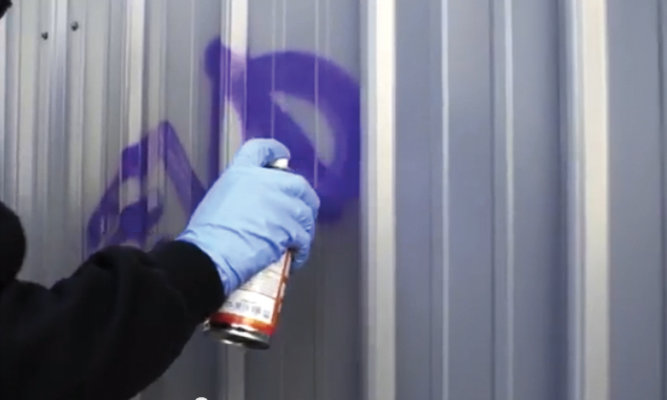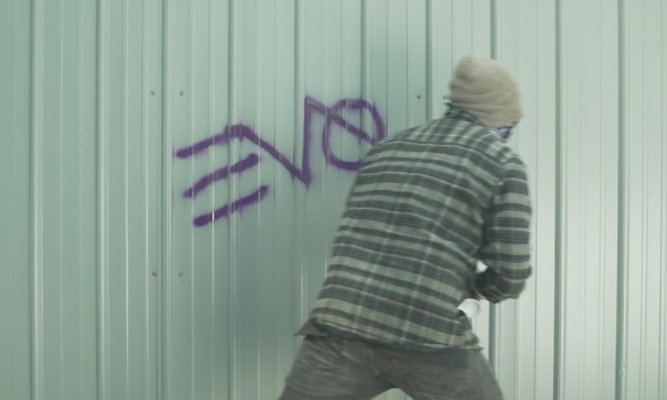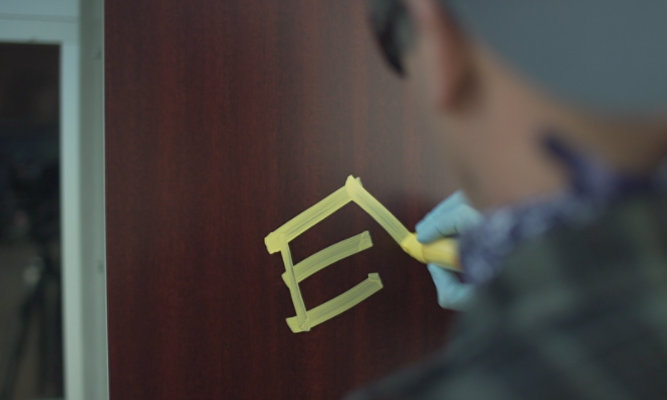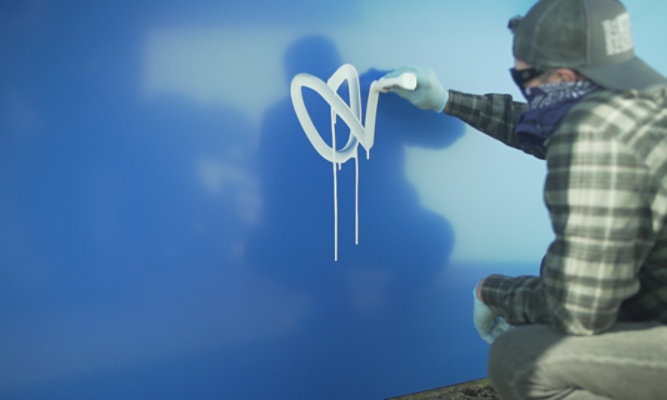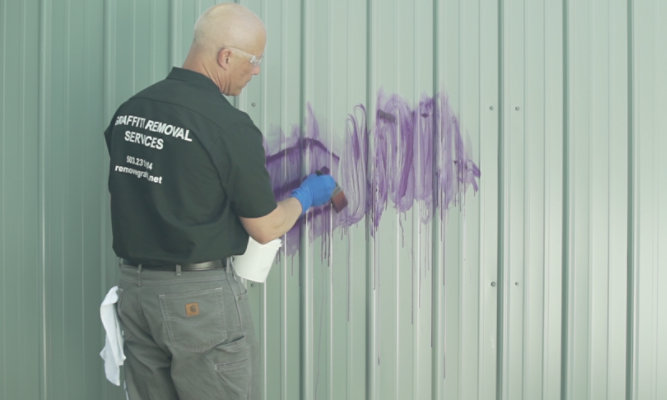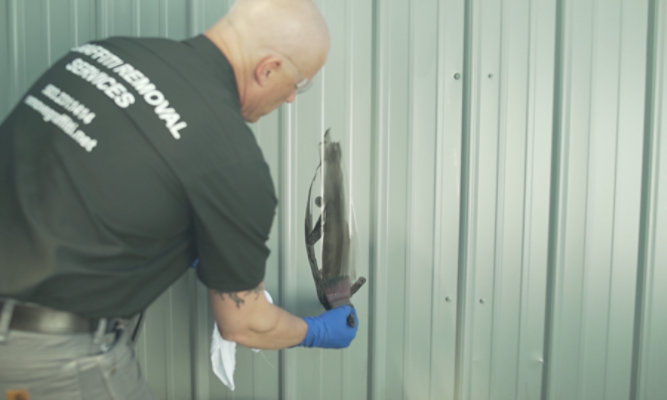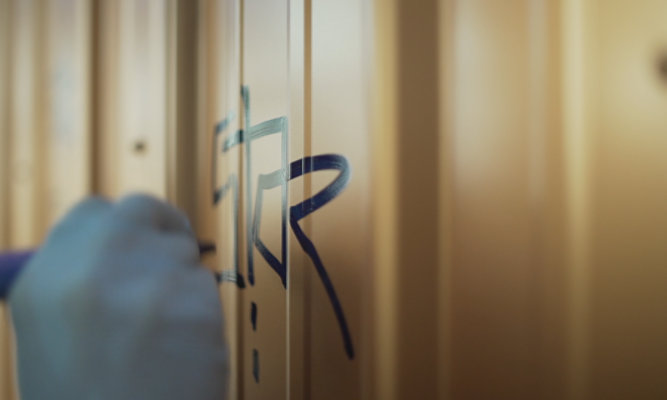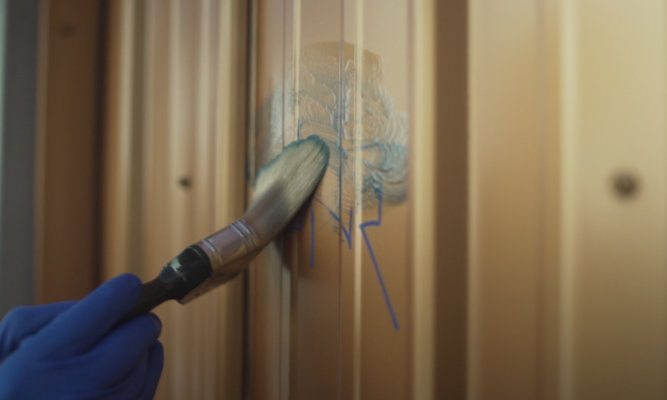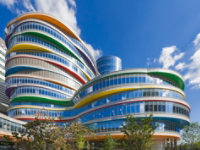Addressing a $12B Problem: Coatings Made to Combat Graffiti
October 23, 2015
Featured on Durability + Design, click here to view article.
Over the last three years, graffiti-based vandalism has grown significantly in the United States, costing an estimated $12 billion in annual cleanup. In an effort to mediate the problem, many cities are passing regulations that dictate how quickly graffiti must be removed. While these graffiti regulations are aimed at curbing the issue, traditional methods of removal are expensive and time-consuming causing unplanned expenses and reducing productivity for building owners.
Coating manufacturers around the world have recognized the issue building owners face and are directing their attention to developing a solution for graffiti removal that meets the needs of everyone throughout the value chain performance and restoration process. Recent advancements in technology are now setting a new standard for addressing graffiti quickly and cost-effectively. Graffiti-resistant metal coatings paired with simple, environmentally friendly cleaning solutions are enabling small businesses and building owners to keep up with the crisis.
Although many forms of graffiti may be visually captivating and demonstrate artistic skill, the difference between art and graffiti is permission. When done without permission, marking a public or private property is illegal. Few offenders are caught, and graffiti is not typically reported to the police, so the true scope of the problem is unknown. In some media outlets, graffiti is glamorized as a form of street art, which may be contributing to its spread.
Graffiti 101
Graffiti is commonly associated with colorful spray paint found on the sides of buildings and trains. In truth, graffiti constitutes any type of undesirable marking, etching or painting that illegally defaces public or private property.
Graffiti is typically under 6-square-feet in size and falls into one of several categories:
- Gang graffiti: Used to convey threats of violence or mark territories.
- Copycat gang graffiti: Mimics gang graffiti.
- Tagger graffiti: May be an individual marking many places with a “signature mark” or more complex art on the side of a building, bridge or other outdoor venue.
- Conventional graffiti: Isolated and typically associated with “exuberant” youth.
- Ideological graffiti: Conveying political messages or racial, religious or ethnic slurs.
Various mediums are used to tag buildings. Battery acid, used for etching, is the most challenging substance to remove, followed by Sharpie brand permanent markers. Other common substances for marking include shoe polish, lipstick, pens, pencils, razors, glass cutters and glass-etching fluid. Spray paint is the most recognizable and common medium of graffiti, as it allows perpetrators to work quickly while covering a large area.
Graffiti can contribute to neighborhood blight, lost ridership on transit systems, reduced retail sales and declining property value. Some estimates say commercial real estate value can drop between 25 to 30 percent if there is graffiti within two blocks of a building.
From Buses to Buildings, Graffiti is Not Exclusive
Graffiti perpetrators frequently choose locations with light-colored surfaces near public spaces in order to better display their work to a large viewing audience. Common targets include:
- Transit-Oriented Spaces: Inner and outer sides of buses, trains, subways, transit stations, shelters, bridges, freeway overpasses, streets, sidewalks and parking garages;
- Signage: Traffic and freeway signs, and billboards;
- Buildings: Business and residence walls facing streets, garages, fences and sheds — large walls without windows and doors provide the perfect canvas for large-scale projects; and
- Parks: Statues, monuments, park benches, vending machines and trees.
Graffiti also has a serious cumulative effect, with one incident often attracting another. According to data from Graffiti Hurts, a grassroots community education program, rapid removal of graffiti within 24 to 48 hours is an effective prevention tool, resulting in a nearly zero rate of recurrence.
With the large uptick in graffiti and substantiated research on the importance of quick removal, many local governments have adopted new laws that impose strict regulations around removal timeframes. In some cities and jurisdictions, property owners have as little as 48 hours to remove the graffiti and even for those that offer more time, the window for removal is often no more than seven days.
Recent advancements in technology are now setting a new standard for addressing graffiti quickly and cost-effectively. Graffiti-resistant metal coatings paired with simple, environmentally friendly cleaning solutions are enabling small businesses and building owners to keep up with the crisis.
Restoring Vandalized Surfaces
Because of the many locations, mediums and types of graffiti, a wide-range of removal techniques are available, but the most common are complex, expensive and time-consuming. Traditional removal techniques include:
- Spray Painting: This is a short-term solution that covers the graffiti but leaves a fresh canvas for new perpetrators.
- Solvent Cleaning: Strong solvents used to remove graffiti will often etch, mar or damage the vandalized surface and leave behind a halo (outline), flashing or shadow resembling the original graffiti. It’s also important to note that the solvents can quickly damage a coated substrate like metal buildings or railcars, and the original coating must then be stripped and reapplied to complete the restoration.
- Pressure Washing: Depending on the graffiti medium used, solvent added to water can be an effective removal technique. However, pressure washing can also wear down or damage the original coating.
- Chemical Stripping: By using MEK (methyl ethyl ketone) or paint thinners, the vandalized paint is stripped from the surface, requiring it to be repainted.
- Sandblasting and Repainting: A complete and effective removal often involves sandblasting the graffiti and repainting the surface, which is a time-consuming and expensive, multi-day process.
Tackling the Issue
Due to the complications that arise from traditional graffiti removal processes, a number of coatings have been developed that claim vandalism resistance, making them easier to clean if it occurs. Clear top coatings are a common form of protection, and come in four different types:
Sacrificial coating forms a clear barrier over the surface it is protecting. Graffiti is removed by pressure washing the surface to remove the top coating, which must then be reapplied. The coating is typically a polymer, which forms a weak bond with the substrate allowing it to wash away easily.
Semi-sacrificial coating acts as a sealer to protect the pores of the coating or surface of a wall. If the surface is vandalized, the markings are removed using a combination of a solvent and pressure washing. Typically, these coatings need to be reapplied every other time that graffiti is removed.
Permanent clear coating provides a barrier that prevents graffiti from permanently adhering to the surface. This type of coating can be made from polyurethanes, nano-particles, fluorinated hydrocarbons, or siloxanes, but can add more than 20 percent to the overall coating cost for a building. In addition, solvents used to remove graffiti can damage some permanent clear coatings.
Permanent graffiti-resistant coating offers a long-term, durable paint formula that when paired with a water-soluble, biodegradable cleaning system, quickly and safely removes the vandalism without compromising the integrity of the coating. This method provides a cost-effective, environmentally friendly graffiti removal process, as it allows building owners to clean the vandalism with a graffiti cleaning service rather than applying a fresh coat of paint to the exterior.
Many manufacturers make paints and coatings that claim resistance against common substances used in graffiti marking, but it is often challenging to compare and validate claims. That process is now easier through the ASTM D6578/D6578M Standard developed by the American Society for Testing and Materials International (ASTM). This standardized method of evaluating anti-graffiti coatings allows owners to compare claims made by different manufacturers. ASTM-tested mediums include spray paint, permanent marker, wax crayon, ballpoint ink and water-based ink markers. During the testing process, each coating is subjected to a controlled medium and cleaning agent in order to evaluate the graffiti resistance of the product.
Because graffiti is such a growing problem, many architects look to ASTM D6578/D6578M compliant coatings to ensure graffiti-resistance on the building materials they select for new construction. Leading coating manufacturers have and should take steps to ensure their coatings are ASTM D6578/D6578M compliant.
Best Practices
Although compliant coatings go a long way in combatting graffiti, my company believes the best removal processes incorporate the use of water-soluble, biodegradable cleaning systems made from soluble alcohol that can be rinsed off with water.
The combination of high-performance coatings and a tested and approved environmentally safe cleaning system can help save building owners the significant costs of repainting or replacing panels. For example, my company has developed a system with a graffiti cleaning service company that offers customers a fast and cost-effective removal solution.
The best variants of these non-toxic products use a brush-on, wipe-off application with no dwell time to quickly and effectively remove graffiti without damaging the underlying coating. They contain no phosphates, chlorinated hydrocarbons, Xylene or any other substance known to cause environmental or health destruction. These removal agents are safe and effective, and do not damage the coating or gloss level.
“Graffiti removal comes down to three things: The type of surface affected, the type of graffiti medium used and the removal solution you are going to apply,” said Paul Watts of Graffiti Removal Service Inc., the company Valspar aligns with for its coating cleaning service.
“The main goal for a customer in removing graffiti is to have choices before and after graffiti occurs that minimize cost of ownership. We have identified a way for customers to remove graffiti from their existing pre-painted metal buildings with our eco-friendly cleaning/removal product — this allows customers for the first time to keep and maintain the integrity of their buildings with a ‘brush on wipe off’ solution without repainting or replacing panels. This is a win for everybody.”
As graffiti continues to increase, it is now more important than ever for technology and science to rise to the occasion. The solution is complex, multi-faceted and requires cooperation among cities, building owners and manufacturers. The combination of graffiti-resistant coatings and an environmentally safe cleaning system has set a new standard for addressing the problem quickly and cost-effectively. Maintenance professionals and building owners now have a powerful tool to fight graffiti and get back to business in a matter of minutes versus days.
By Jeff Alexander, Vice President of Sales for Valspar Coil and Extrusion
Featured on Durability + Design, click here to view article.
